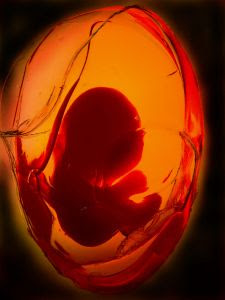The importance of folate, zinc and antioxidants

Subfertility is defined as the failure to conceive after 1 year of regular, unprotected intercourse with the same partner.
Approximately 10–17% of all couples experience primary or secondary subfertility at some time during their reproductive life.
UV radiation destroys folic acid, a precursor for folate, the lack of which may result in birth defects.
Current treatments of subfertile couples are usually empiric, as the true cause of subfertility often remains unknown.
Therefore, we outline the role of nutritional and biochemical factors in reproduction and subfertility.
A literature search was performed using MEDLINE, Science Direct and bibliographies of published work with both positive and negative results.
The studies showed folate has a role in spermatogenesis.
In female reproduction, folate is also important for oocyte quality and maturation, implantation, placentation, fetal growth and organ development.
Zinc has also been implicated in testicular development, sperm maturation and testosterone synthesis.
In females, zinc plays a role in sexual development, ovulation and the menstrual cycle.
Both folate and zinc have antioxidant properties which counteract reactive oxygen species (ROS).
Thiols, such as glutathione, balance the levels of ROS produced by spermatozoa and influence DNA compaction and the stability and motility of spermatozoa.
Oocyte maturation, ovulation, luteolysis and follicle atresia are also affected by ROS.
After fertilization, glutathione is important for sperm nucleus decondensation and pronucleus formation.
Folate, zinc, ROS and thiols affect apoptosis, which is important for sperm release, regulation of follicle atresia, degeneration of the corpus luteum and endometrial shedding.
Therefore, the concentrations of these nutrients may have substantial effects on reproduction.
In conclusion, nutritional and biochemical factors affect biological processes in male and female reproduction. Further research should identify pathways that may lead to improvements in care and treatment of subfertility.
Read more: The importance of folate, zinc and antioxidants in the pathogenesis and prevention of subfertility
TODAY'S BOOK SUGGESTION:
 Ready: Why Women Are Embracing The New Later Motherhood
Ready: Why Women Are Embracing The New Later Motherhood by Elizabeth Gregory
-- Over the past three decades, skyrocketing numbers of women have chosen to start their families in their late thirties and early forties.
In 2005, ten times as many women had their first child between the ages of 35 and 39 as in 1975, and thirteen times as many had their first between 40 and 44.
Women now have the option to define for themselves when they're ready for a family, rather than sticking to a schedule set by social convention.
As a society, however, we have yet to come to terms with the phenomenon of later motherhood, and women who decide it makes sense for them to delay pregnancy often find themselves confronted with alarmist warnings about the dangers of waiting too long.
In Ready, Elizabeth Gregory tracks the burgeoning trend of new later motherhood and demonstrates for many women today, waiting for family works best.
She provides compelling evidence of the benefits of having children later -- by birth or by adoption.
Click to order/for more info: Ready
Don't have a Kindle? Get your Kindle here, or download a FREE Kindle Reading App.
Category: birth defects, chromosomal disorder, embryo, Fertility, folic acid, implantation, infertility, Male Fertility, ovaries, sperm, suppliments, Vitamins








0 comments